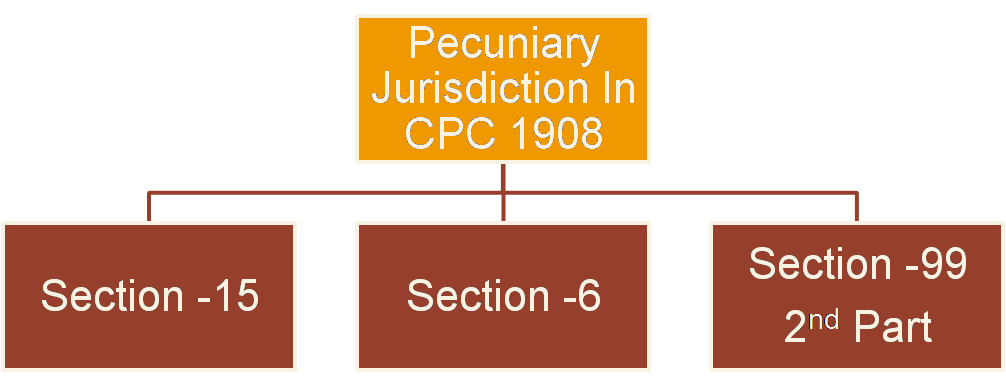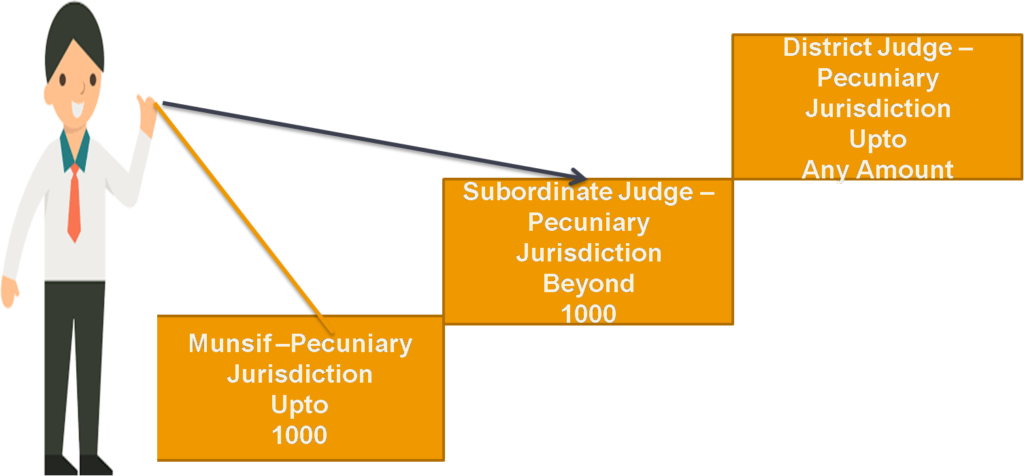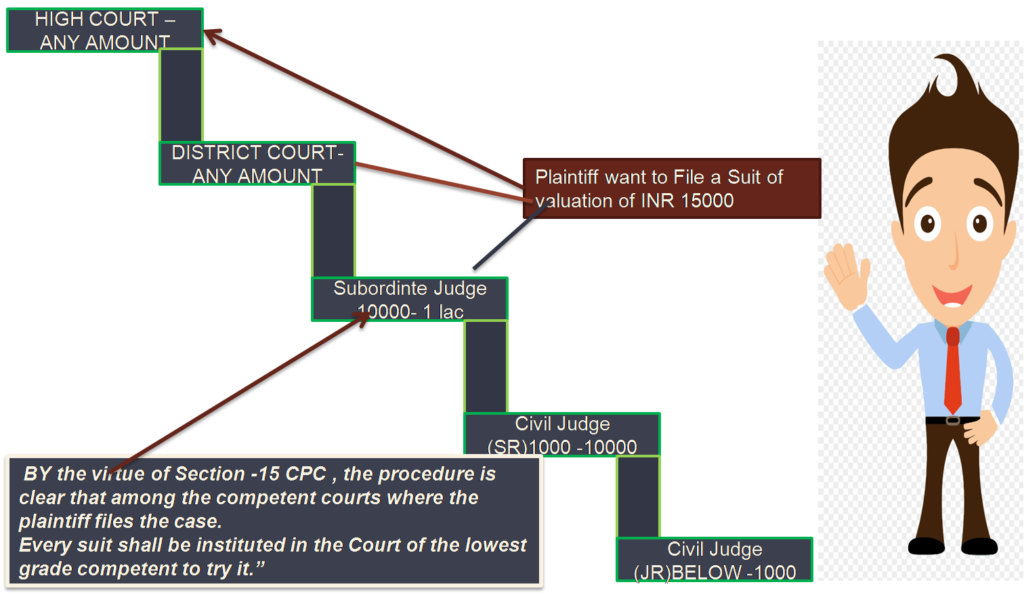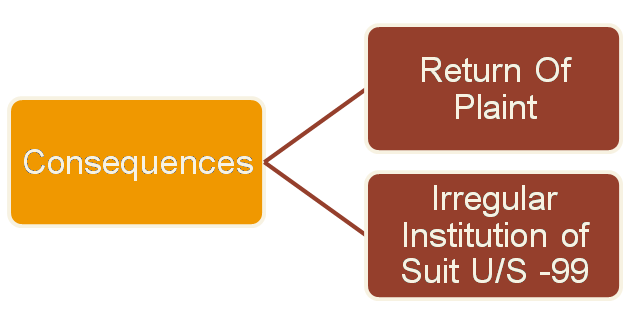Pecuniary Jurisdiction Under Section -15


Keywords In Section -15
“Court in which suits to be instituted.
Every suit shall be instituted in the Court of the lowest grade competent to try it.”

Section 15 lays down the rule stating that the petitioner/plaintiff has to file a case in the lowest court of competent jurisdiction.
This is the rule of procedure mentioned in the code. However, if the suitor fails to follow this rule of procedure and files the case in a higher court, the Court has the discretion to either entertain the suit or return it to the lowest court that is competent to try. The Court has the discretion to return it under Order 7 Rule 10.
Shall be Instituted
To under the “Shall” component of this section , we must take the reference of a very old case of Allahabad High Court Mazhar Husain And Anr. vs Nidhi Lal on 13 December, 1884 , a bench of 5 judges goes deep in the concept.
A instituted a case against B in the Court of the Munsif, who returned the plaint by holding that the value of the subject matter of the suit was more than Rs.1,000 and hence beyond its jurisdiction. The plaint was taken back by A and was subsequently filed in the Court of the Subordinate Judge who accepted it, tried the case and passed a judgment. The decision was appealed to the District Judge where the question arose whether the Court of the Subordinate Judge had competent jurisdiction to try the case in the first place as the value of the subject matter was less than Rs.1,000 and was it right on part of the District Judge to refuse to entertain the plea of defect in jurisdiction.
Shall be Instituted – In the Court Of Lowest Grade

It was held that to send the plaintiff back at this stage of the proceedings to the Munsif’s Court would surely be most inequitable and the District Judge was not erroneous in refusing to entertain the plea.
The interpretation of the word ‘shall’ in section 15 was illustrated in the case where the Court held that the word ‘shall’ is imperative on the suitor and is used in order to protect the Courts. This is a rule of procedure that has to be followed while filing a suit in the lowest court; not because the higher court is incompetent to try it but because it will lead to a more systematized and clearer demarcation of the Courts on the basis of their pecuniary jurisdiction. This is a binding rule on the suitor and if he files the suit in a higher grade court, it will be a mere irregularity of procedure and not invalidity of the suit.
Competent To Try
Competency : The meaning of competency has been expressly explained in the case of Drona Vajulla v. Vallabhajoyslu [AIR 1958 AP 218] where it has been stated that competency in reference to Section 15 is only pecuniary competence and not lack of jurisdiction of the superior court to try it. The superior court is competent and has the jurisdiction to try the suit but as a matter of order and convenience.
This principle was illustrated in the case of Mohani Mohan where A instituted a suit against B in the Court of the Subordinate Judge, claiming recovery of possession of certain lands. B raised an objection that the suit was overvalued and that it should have been filed in the Court of the Munsif. This issue was brought up for hearing and the Court held that though the parties had jumped the hierarchy, the subordinate court stands competent to take the case and adjudge it. It is a valid suit and would not lead to the invalidity of the judgement. It was also held that there are multiple courts that might have competent jurisdiction and it is not necessary that the Munsif or the lowest court will always have competent jurisdiction over the case.
Competency

Beneficial Provision:
The object underlying the provision of section 15 is twofold: firstly, to see that the courts of higher grades shall not be overburdened with suits, and secondly to ensure convenience to the parties who are part of such suit.
Since the provision aims to protect the Higher Courts from getting overcrowded and thus, the discretion lies with the Court whether to entertain or return the suit. The proviso is for the benefit of the Court, and it is not bound to take advantage of it. If it wishes to retain the suit in its Court, it may do so as it is not bound to refuse to entertain it. If it does not wish to try the suit, it may refuse to entertain it and can thus return it under Order 7 Rule 10.
The case of Bhuwaneshwari Kuer vs Raghubansh Mani Prasad Narrdayan laid down an important principle with respect to the rule regarding return of plaint by holding that the provisions of Order 7, Rule 10, were not imperative and it was a matter of discretion of the higher court.
Therefore, the parties’ contention that it was the duty of the higher court to return the plaint for being presented before a competent Court was negated and considered invalid.
According to the above illustration, the first consequence of not following the procedure stated under Section 15 is called irregular institution of suit. This provision gives the higher Court the discretion to adjudge the suit irrespective of the deviation from Section 15.
Section 15 is called irregular institution of suit. This provision gives the higher Court the discretion to adjudge the suit irrespective of the deviation from Section 15.
The Court can but is not ‘bound’ to return the suit to the lowest competent Court as Order 7 Rule 10 gives the Court this discretion to return or not return the suit.
Valuation :
The Pecuniary Jurisdiction of a Court is determined on the basis of the value of the relief claimed by the palintiff.
Tara devi v. Thakur Radha Kishan Maharaj Air 1987 SC 2085
Ordinarily , Value Placed by the Plaintiff on his Suit , prima facie determines jurisdiction and the court shall not examine the correctness of the valuation chosen but Plaintiff have not the liberty at put any arbitrary value to his suit . He cannot undervalue or overvalue the suit, and the Court can intervene to determine the appropriate forum.
Abdul Hamid v. Abdul Wajid AIR 1988 SC 1150








No comment